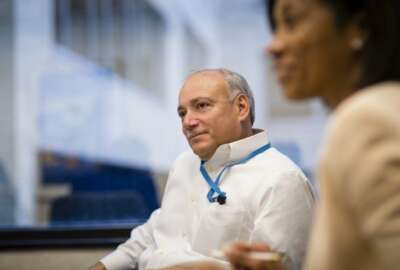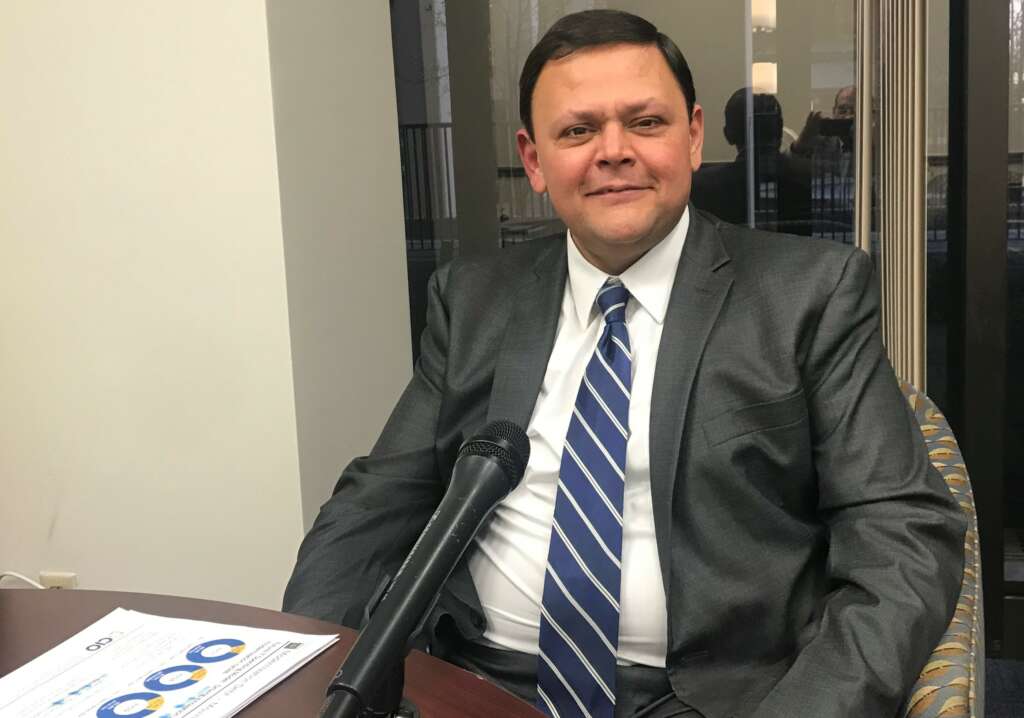 Exclusive
Exclusive  Exclusive
Exclusive Gundeep Ahluwalia, the Labor Department’s CIO, said the money spent on legacy technology has dropped by 10% over the last few years thanks in part to creating a...
The Labor Department is showing the true power of the Technology Modernization Fund. With the fund’s goal being to help agencies accelerate existing technology projects, Labor received $3.5 million to help move off paper-based labor certifications to electronic processes.
Gundeep Ahluwalia, the Labor Department’s chief information officer, said TMF funding is just one funding sources for the agency’s bigger IT modernization effort.
“Now we have electronic labor certifications being issued out of the Department of Labor that go to the employer like a boarding pass arrives. We have eliminated all of that cost,” Ahluwalia said on Ask the CIO. “All of that came out of the rendition of that plumbing called the platform that we created. The Bureau of Labor Statistics wanted to do a mobile app and we said ‘okay.’”
This plumbing or platform Ahluwalia mentioned made the labor certifications program, the mobile app and a host of other efforts easier because Labor now has technology guardrails within which to work.

“The one good thing is that all our infrastructure is consolidated and centralized. We also have undertaken a shared services initiative … to move to a single entity for all mission IT,” he said. “Meanwhile, since we controlled the infrastructure, what we tried to do was rather than telling everyone there was only one round peg and we will fit it into a square hole is we took Amazon Web Services, Microsoft’s Azure and our data center and built hybrid cloud offering that was provided to all sub-agencies, and within that what are the dos and don’ts. We provided enough flexibility to them so that they are able to create applications that are mission specific and that is place where they came and started playing with us.”
Ahluwalia said now the move to shared services will be easier given the success of the labor certifications or the Office of Federal Contract Compliance or the Wage and Hour Division — all of which took advantage of the platform to modernize back-end systems.
In addition to the flexible platforms, Labor’s management is giving the CIO’s office more control over and more access to technology funding than ever before.
Ahluwalia, who has been CIO for more than three years, has made more progress than many of his predecessors. Part of the reason for the lagging success of IT modernization is Labor struggled to implement the IT reform laws of the past 25 years, including most recently the Federal IT Acquisition Reform Act (FITARA).
Labor received a C- on the December FITARA scorecard, getting dinged a whole grade because Ahluwalia doesn’t report directly the Secretary Eugene Scalia. But the agency did receive As in five of the seven subcategories, including managing program risk, conducting portfolio reviews and taking full advantage of the Modernizing Government Technology Act.
 Exclusive
Exclusive Labor previously didn’t have the money to update its commodity technology since more than 90% of its budget went for operations and maintenance over the last decade.
Ahluwalia said more recently Labor is building new technology instead of just managing technical debt, thus pushing that figure down to about 80% of spending on O&M.
“It takes a while to shift it, but we’ve already done from 10% to closer to 20%,” he said. “It’s relationship factor. It is the top cover from Deputy Secretary Pat Pizzella, assistant secretary for management Bryan Slater and Secretary Scalia. We are a part of every budget meeting. It’s truly empowering from that aspect. The second piece of the relationship mantra here is the lateral coordination between me, the CFO, the budget office and procurement. I can’t do this without their support as well as the support from OMB and Congress.”
Those relationships helped Labor save and redistribute to IT projects more than $70 million. Ahluwalia said the agency did this by closing more than 60 data centers, reducing office space, consolidating software licenses and by leasing laptops.
The agency made some of these decisions because Congress forced its hand in many ways, cutting its budget by $258 million in fiscal 2019 and forcing leadership to make decisions that may have been delayed or ignored previously.
“Leadership has given me the freedom to ‘trap’ even non-IT savings and deploy them. They realize that this is the place to improve the effectiveness of programs. If we continue to utilize the old technology, it never happens,” Ahluwalia said.
Now, Labor has the authorities under the MGT Act to start “trapping” even more IT funding, which is something the agency has been asking for well before the law passed.
Ahluwalia added the IT modernization successes also go back to the CIO’s office creating a better a better relationship with the mission areas. He said his priorities are mission priorities, not ones focused solely on technology.
“We started small. We tried to do WiFi in this building. We realized we had to get some joint wins with the mission areas,” he said. “We asked them what are these things they need. I saw no one in the building walking around with laptops. Why? They kept breaking and there was no WiFi. Just changing that behavior and providing those small solutions opened a trust account. Then we started depositing money in that trust account. Slowly, the mission areas came asking for help.”
Ahluwalia said the goal is to connect the IT workforce and mission area to solve problems.
“Another thing that we’ve done is consolidate with login.gov so you don’t need 30 different profiles to interact with the Labor Department,” he said. “These things are what we come to expect in our private life so why can’t the government catch up with that? That is the vision for the Department of Labor and we are on our way.”
Copyright © 2025 Federal News Network. All rights reserved. This website is not intended for users located within the European Economic Area.
Jason Miller is executive editor of Federal News Network and directs news coverage on the people, policy and programs of the federal government.
Follow @jmillerWFED
